How to have a lucky (remote!) Japanese New Year
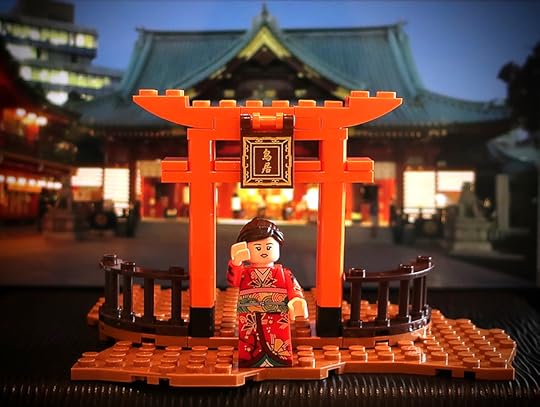
Even in Japan this year, a lot of temples and shrines are closed because of the current COVID spike, and trains didn’t run all night on New Year’s Eve, so most people can’t usher in the new year with the traditional First Shrine Visit, First Fortunetelling Prediction, or even a bowl of toshikoshi soba.
But don’t despair, because this post is all about getting your lucky new year fixes safely and remotely, wherever you happen to live!
And remember — in Japan, New Year’s lasts for three days, so waiting to make the traditional observations until the 2nd or 3rd is still legit!
1
First, let’s eat some long noodles for long life
Everybody looks forward to chowing down on toshikoshi soba for their first meal of the new year, but if you’re not anywhere they’re dishing up big satisfying bowls of buckwheat noodles, you can easily whip up a tasty batch of them yourself.
You can use an authentic recipe for Japanese toshikoshi soba soup, or you can also capture the spirit of eating long noodles for long life with my favorite Japanese noodle dish! (If you subscribe to my Japanagram newsletter, you’ll recognize this one from the April edition’s Japanese Home Cooking feature!)
Creamy Sesame Noodles
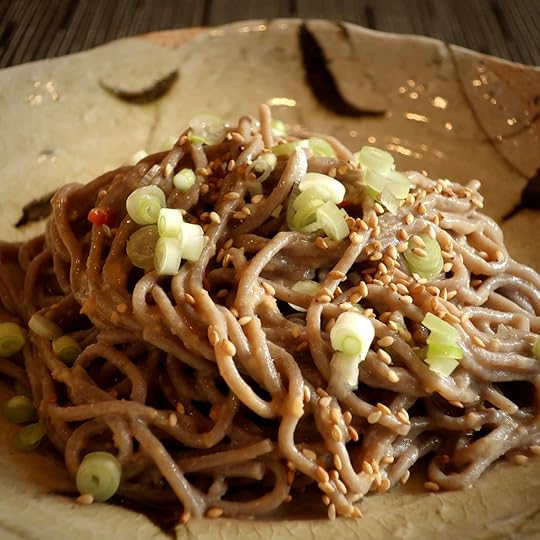
Ingredients (per single serving):
3.5 oz. (100 g) dried Japanese soba (buckwheat) noodles or regular spaghetti (if you can find the whole wheat kind, it’ll more closely approximate Japanese soba)
2 T. sliced green onions
Toasted sesame seeds, for garnish
Creamy Sesame-Ginger Dressing
Cook noodles according to instructions on package. Drain and rinse (so they don’t stick together). Toss with dressing and green onions. Sprinkle sesame seeds on top and serve warm or cold.
Creamy Sesame-Ginger Dressing (makes enough for 12 servings):
1/4 c. soy sauce
1/4 c. rice vinegar
1/4 c. water
2 cloves garlic, grated
2 knobs peeled fresh ginger, grated (each the size of your thumb, or larger)
6 T. sesame tahini or Japanese sesame paste*
1 T. sugar
1/2 t. red pepper flakes
Whisk all dressing ingredients together and store in refrigerator. Will last a month in the fridge (but I guarantee it’ll be long gone before then!)
*You can buy tahini online if you can’t find it at your local supermarket, or you can substitute creamy natural peanut butter (the kind without added sugar) for a slightly different but still delicious taste.
2
Now let’s get your First Fortune of the New Year
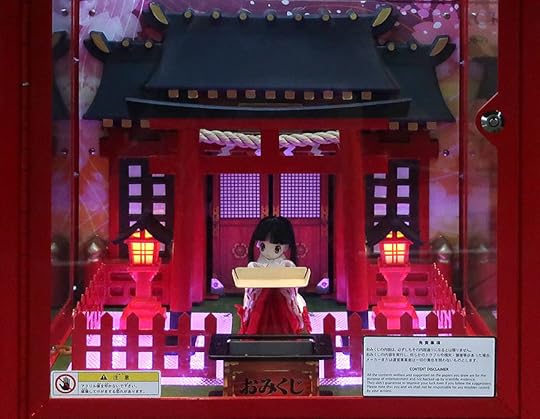
Everyone wants to see what fate has in store for them in the new year, and buying the first o-mikuji is a popular tradition on the first shrine visit. But even if you can’t get to an o-mikuji vendor, you can get a genuine reading based on the I Ching (the same divination method sold at shrines and temples) by…downloading a FREE app to your phone!
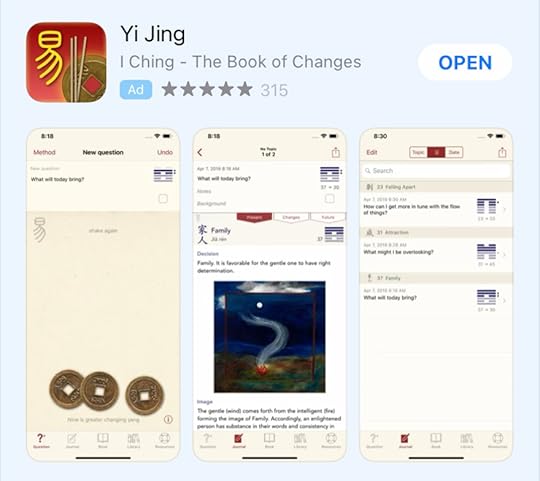 This is the app I like
This is the app I like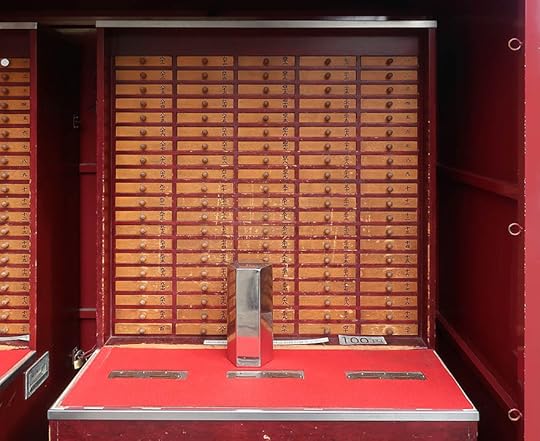 Traditionally, the I Ching relies on “fate” to predict fortunes based on random throws of yarrow sticks (like this one at Senso-ji temple) or on six tosses of three coins.
Traditionally, the I Ching relies on “fate” to predict fortunes based on random throws of yarrow sticks (like this one at Senso-ji temple) or on six tosses of three coins.The app uses the coin method. Each coin can come up two different ways (heads or tails), and each random toss of three coins results in one line of a “hexagram.” Six tosses of the coins are necessary to build up the entire fortune.
To get started, click on the question mark icon at the foot of the screen…
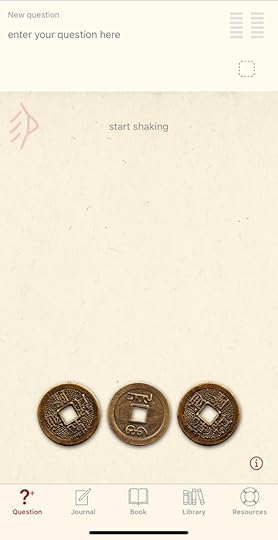
Then type in your question. The I Ching answers open-ended questions (not the kind that can be answered by “yes” or “no”) so be sure you’re asking something like, “What can I look forward to in the new year?”
The app works by physically shaking your phone six times. Each time, the coins will move and show you the result of the toss, then fill in one line in the diagram up in the right corner.
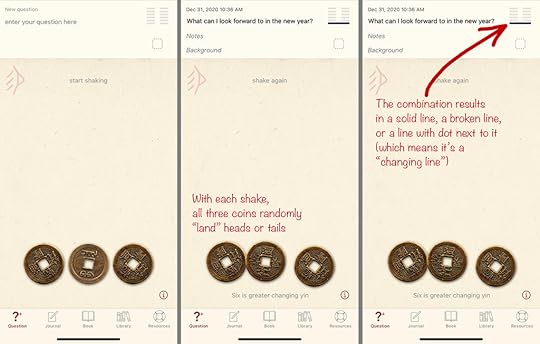
After six separate shakes, it will automatically deliver your prediction for the present and future (click on the tabs to read them), plus any additional information given by “changing” lines.
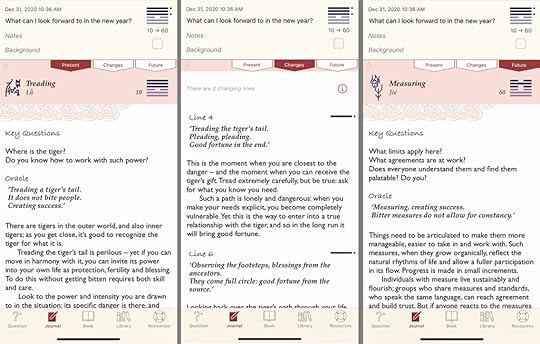
For example, my new year’s fortune for this year was 10 > 60, with changing lines at 4 and 6 (which means Hexagram 10 influenced by Hexagram 60, with clarifying “Changes” information from the fourth and sixth coin tosses). The hexagrams based on your throws will appear automatically, after you finish your six throws, but you can see a list of all 64 possible hexagrams if you click on the Book icon at the bottom of the screen.
There are a number of different translations/interpretations of the hexagrams in English, and some are easier to understand than others. You can get alternative versions by clicking on the Library icon at the bottom of the screen then clicking on “Store” in the upper left of the Library screen (the app and basic translations of the hexagrams is free, but you have to do in-app purchase if you want others). Any versions you buy will show up in your Library, and you can switch between them to compare their interpretations of your fortune.
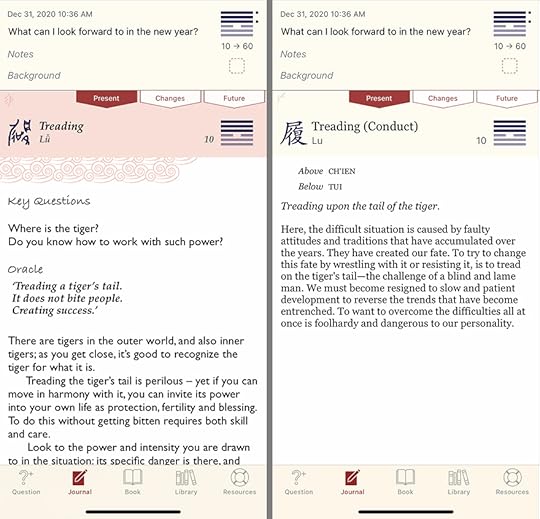
Here’s an example of how different they can be for the same fortune — the one on the left is Hilary Barrett’s “I Ching: Walking Your Path” and the one on the right is Carol K. Anthony’s “A Guide to the I Ching”
And if you get a yucky one? No problem!
In Japan, you can reject any fortune you don’t like by leaving it at the shrine, so it’s only fair that the same rules apply to the app!
3
And finally, let’s make our First Shrine Visit
Even if you live somewhere that’s not remotely close to a Shinto shrine, you can still think about the kind of wishes you make when it’s finally your turn to step up to the offering box, toss your coins, and ring that bell.
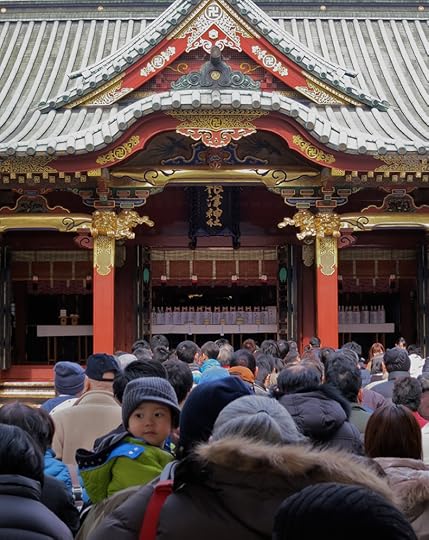
Before we jump into the wishing, though, let’s wait in a virtual line. Let’s stop for five minutes and think about what we want to wish for in the year to come. I don’t know about you, but the longer I wait, the more I remember to ask for stuff that would benefit other people too, not just what I’m hoping my own life will hold in the year ahead.
Fortunately, when you’re making your wishes virtually, you can make as many wishes as you like — and take as long as you like — because there’s nobody behind you in line!
Got your wishes? OK. Close your eyes, imagine yourself at your favorite shrine.
If you like (and you’re nowhere people will think you’re crazy), you can bow twice, clap your hands twice, fold them and make your wishes, then bow again.
Or you can just go for it.
Then, because no new year’s is complete without a little cup of sake…
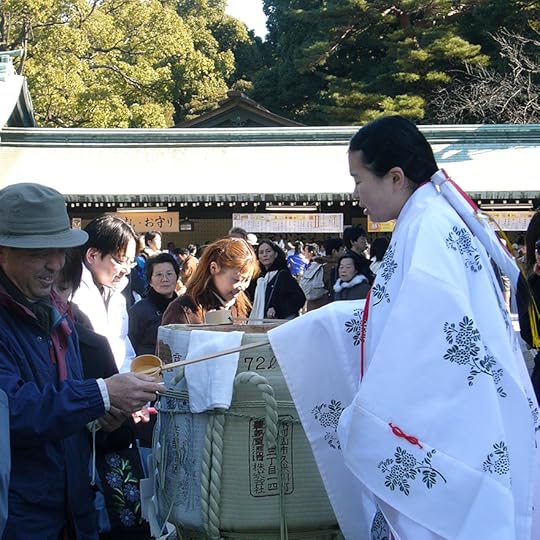
…feel free to take a ceremonial sip, even if it’s not dished out by a shrine maiden!
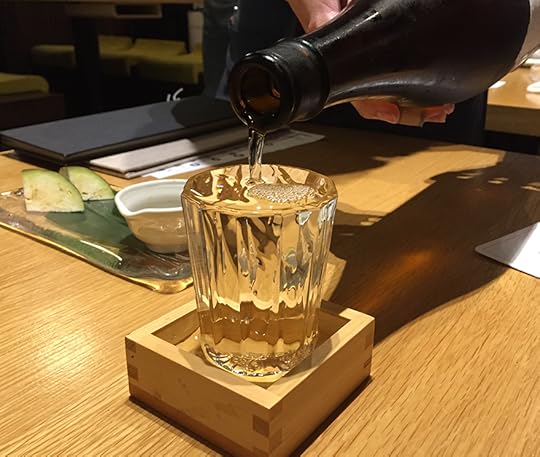
Happy new year, friends far and near・° ♪・☆
May 2021 bring you heaps of happiness and the best of luck!
And if you’re curious where I got that awesome kimono-clad minifig and the Lego torii gate, they’re part of the amazing light-up sakura tree Lego kit I just got from Buildiverse!
•
I hope that as we move deeper into winter, you’ve got plenty of good books and a nice cuppa to curl up with!
 For three hundred years, a missing tea bowl passes from one fortune-seeker to the next, changing the lives of all who possess it…
read more
For three hundred years, a missing tea bowl passes from one fortune-seeker to the next, changing the lives of all who possess it…
read more
•
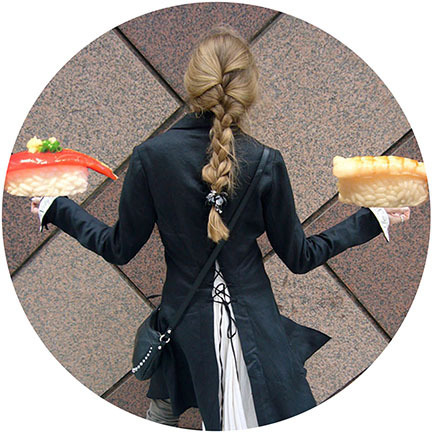
Jonelle Patrick writes novels set in Japan, produces the monthly newsletter Japanagram, and blogs at Only In Japan and The Tokyo Guide I Wish I’d Had



